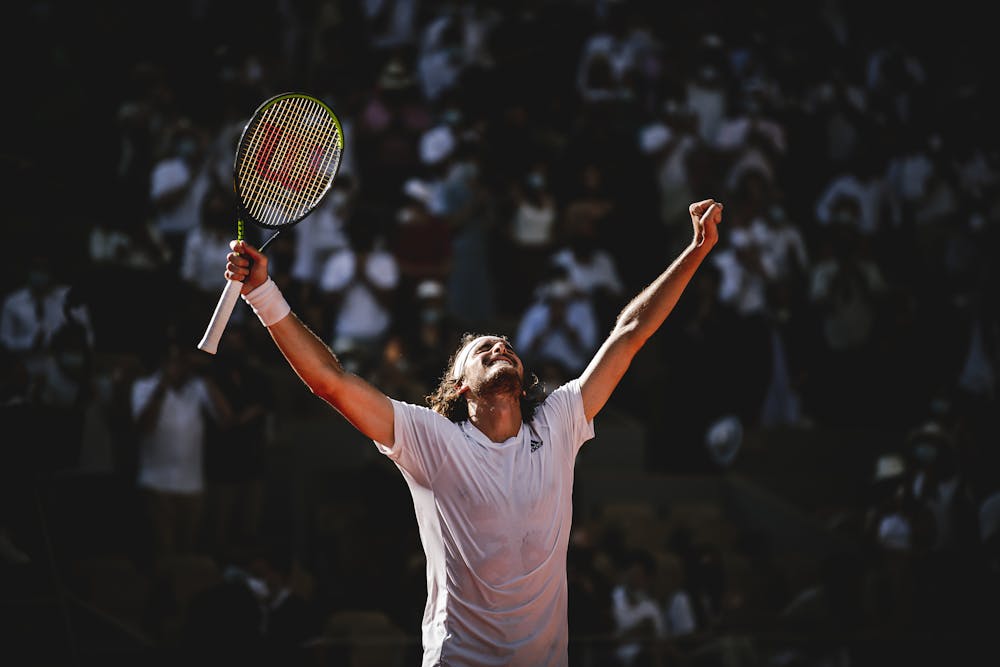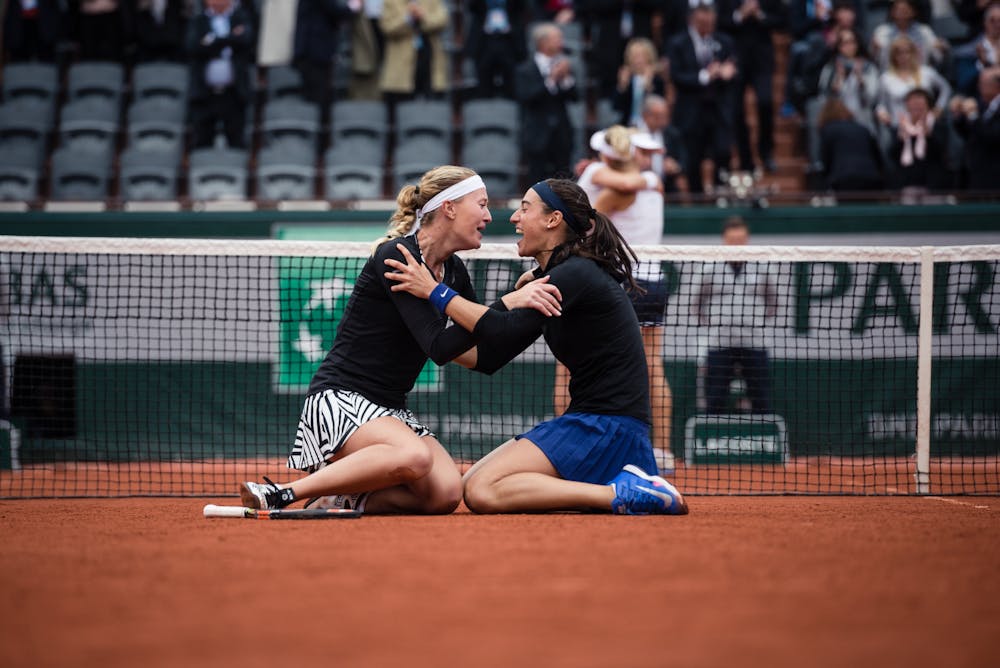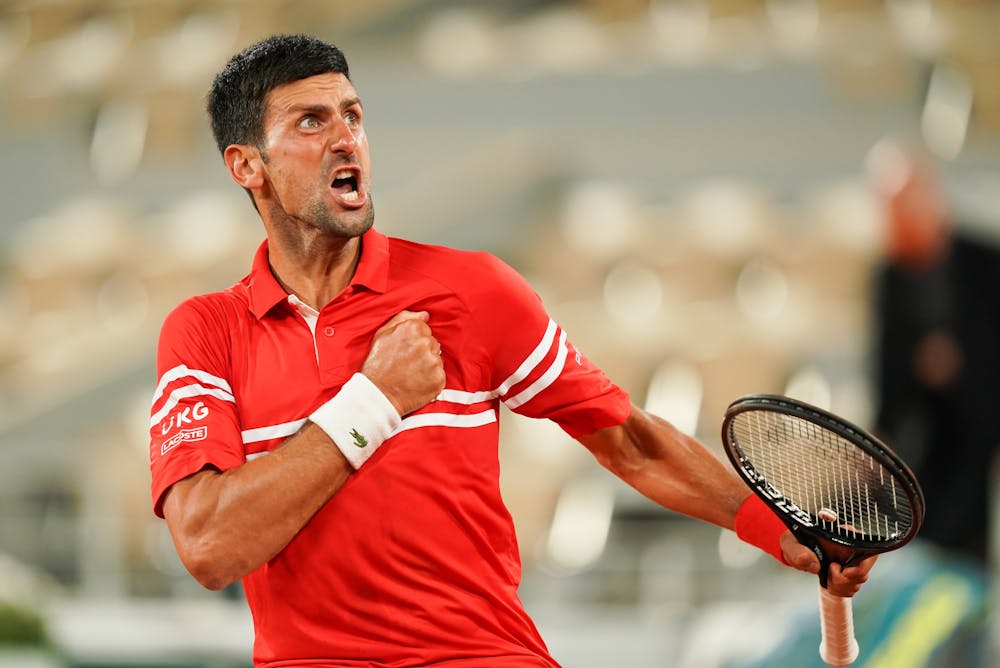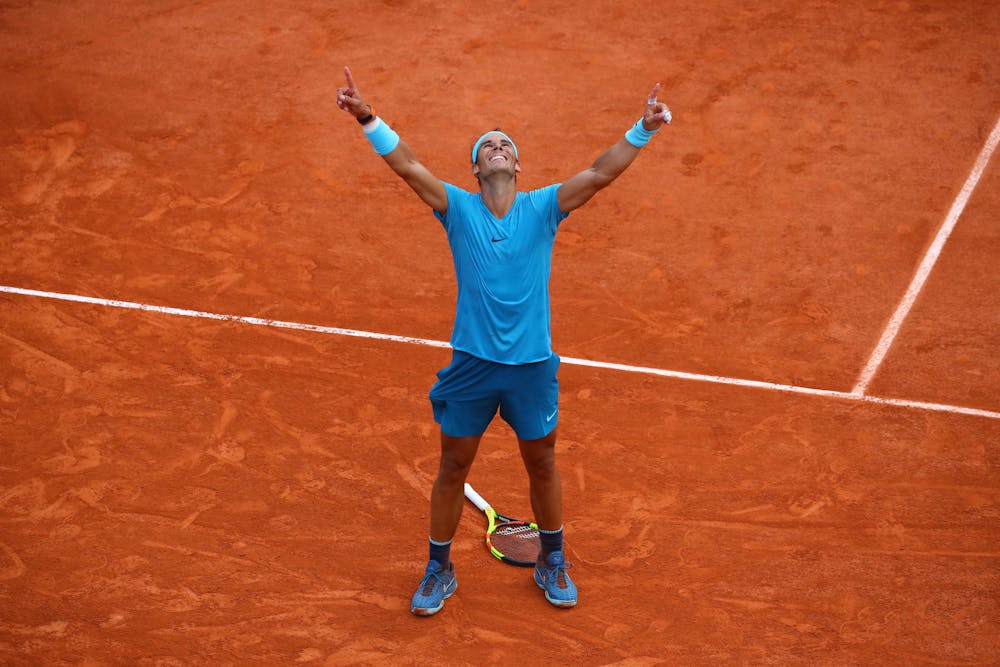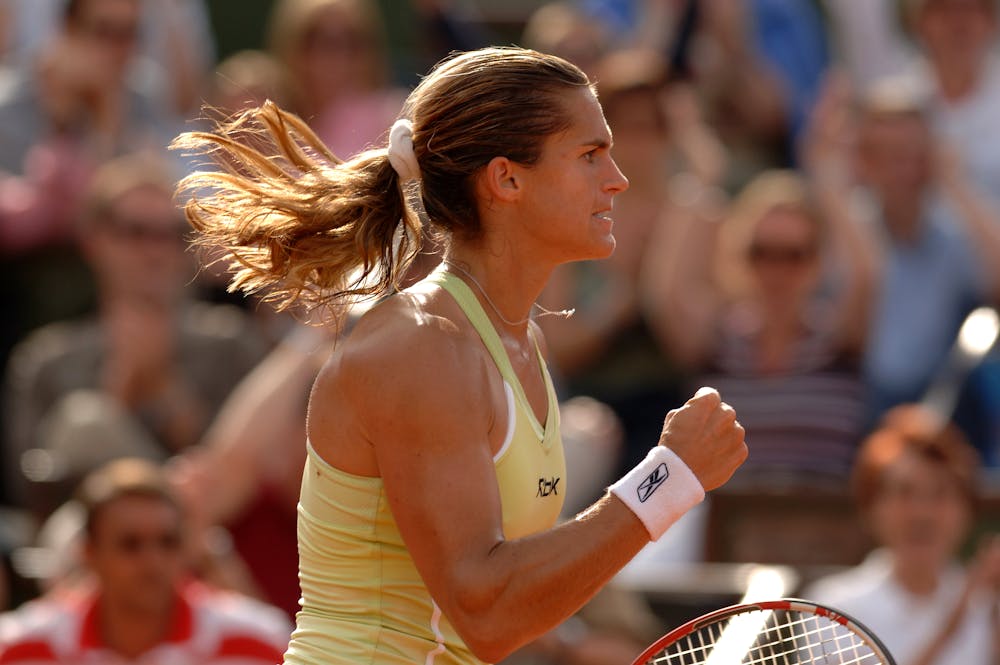When?
Roland-Garros 2016
Who won?
Caroline Garcia and Kristina Mladenovic, in the women’s doubles final
What was happening behind the lens at that moment and how did you feel?
Amélie Laurin: I was moved by the joy they felt. It was wonderful: French players winning at Roland! The third set was tight, with the result in doubt till the end, which made their win all the more beautiful and intense. And then there’s the fact that emotions are shared in doubles. I saw them hugging each other and in the corner of my eye I saw their opponents walk up to each other and do the same. As I clicked away, I trained my lens on that moment to give depth to the photo.
What do you think makes a great victory photo in tennis?
AL: Emotion, without question. You have to capture the moment when the emotion of the player is at its most beautiful, most spontaneous and most touching. What’s tough is that we get emotional behind the lens too. But you can’t lose focus or stop thinking about the framing, the background, etc, which are every bit as important in terms of reading the image as its emotional weight.
What do you like the most about tennis photography?
AL: Tennis photography is about power and graceful movement, an exact moment captured in that movement, a moment of emotion. And when the tennis photography gods are with us, it’s also about light, shadows and backlighting. It’s looking for the perfect spot to set up, to anticipate. You’re never more focused than when it’s set point or match point. It’s looking for the details. That’s what I love.
What is it that makes Roland-Garros unique?
AL: A great team! It’s a real pleasure to be part of it. Working with talented people pushes you to surpass yourself on an artistic level. And they’re also good people who do good things.
What do you think makes a Roland-Garros victory photo so unique in an aesthetic sense?
AL: The clay that sticks to the player’s clothes and skin and reveals the very last traces of the battle they’ve been in. The heightened sense of joy because it’s a Grand Slam tournament.
Which tennis player do you enjoy photographing the most?
AL: I love photographing the most expressive players because their emotion really comes across. For me it’s Serena Williams, Rafael Nadal, Cori Gauff and, among the French players, Hugo Gaston.
Who would you like to see win at Roland-Garros 2022?
AL: I’d have to say Rafael Nadal again. It’s fascinating to see someone beat records. It’s harder to say who’ll win the women’s, which is more unpredictable. I’d love to see Maria Sakkari, I think.
 ROLAND-GARROS
18 May - 7 June 2026
ROLAND-GARROS
18 May - 7 June 2026



